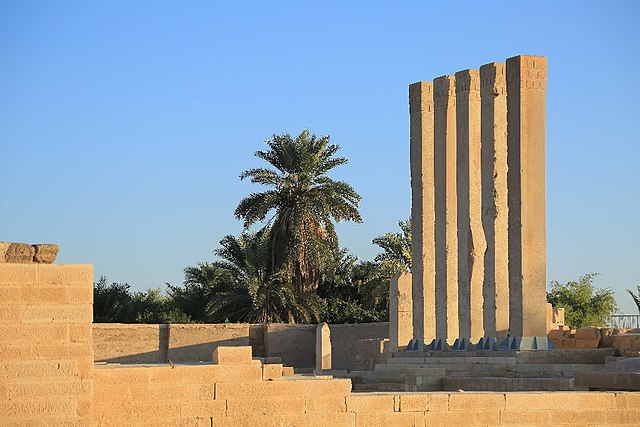The ancient history of Yemen or South Arabia is especially important because it is one of the oldest centers of civilization in the Near East. Its relatively fertile land and adequate rainfall in a moister climate helped sustain a stable population, a feature recognized by the ancient Greek geographer Ptolemy, who described Yemen as Eudaimon Arabia meaning Fortunate Arabia or Happy Arabia. Between the eighth century BCE and the sixth century CE, it was dominated by six main states which rivaled each other, or were allied with each other and controlled the lucrative spice trade: Saba', Ma'īn, Qatabān, Hadhramaut, Kingdom of Awsan, and the Himyarite Kingdom. Islam arrived in 630 CE and Yemen became part of the Muslim realm.
Sabaean inscription addressed to the moon-god Almaqah, mentioning five South Arabian gods, two reigning sovereigns and two governors, 7th century BCE.
A Griffon from the royal palace at Shabwa, Hadhramaut.
Barran Temple or the throne of the Queen of Sheba.
Eduard Glaser.
Qataban was an ancient South Semitic-speaking kingdom of South Arabia that existed from the early 1st millennium BCE to the late 1st or 2nd centuries CE.
Qatabān in 100 BCE
Hellenistic-style Qatabānian sculpture depicting the Moon as a baby boy riding a lion representing the Sun.






